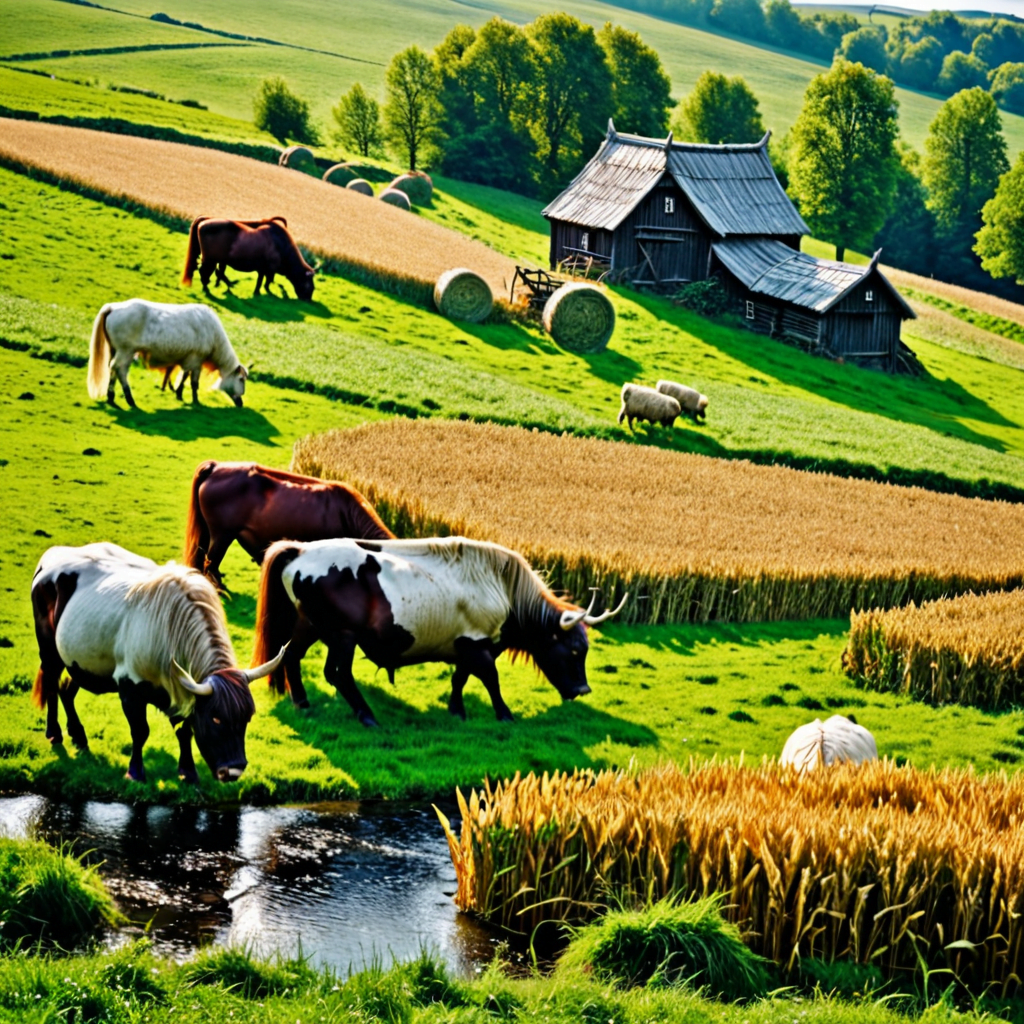The Wandering Minstrels: Myths of Music and Travel
I. Introduction: The Allure of the Wandering Minstrel
The term “minstrel” conjures images of wandering musicians, clad in colorful garb, strumming lutes and singing tales of heroism and love. Historically, minstrels were entertainers who traversed towns and courts, sharing their art with diverse audiences. Their significance extends beyond mere entertainment; they were crucial in the transmission of culture and history.
Music has long been a powerful vehicle for storytelling and cultural exchange. Through song, minstrels conveyed the customs, values, and lore of their communities, allowing for a rich tapestry of shared human experience. This article aims to explore the myths and realities surrounding wandering minstrels, delving into their historical context, archetypes in mythology, and their lasting impact on modern music.
II. The Historical Context of Wandering Minstrels
The origins of minstrels can be traced back to medieval Europe, where they first appeared as performers in courts and public gatherings. These early minstrels were often skilled in various forms of entertainment, including music, poetry, and storytelling.
- A. Origins of minstrels in medieval Europe: Minstrels emerged in the 12th century, playing a vital role in the oral tradition of storytelling.
- B. The role of minstrels in society and court life: They served not only as entertainers but also as historians and commentators, sharing news and events through their songs.
- C. Evolution of the minstrel from the Middle Ages to the Renaissance: As society progressed, minstrels transitioned into more structured performance roles, leading to the emergence of professional musicians and composers.
III. The Archetype of the Wandering Minstrel in Mythology
The archetype of the wandering minstrel is prevalent in various cultures, often embodying themes of freedom and adventure. These myths highlight the minstrels as not just entertainers but as symbols of exploration and the human spirit.
- A. Common themes in minstrel myths across cultures: Themes of love, loss, and heroism are often interwoven into their stories, showcasing the universal nature of human experience.
- B. The archetype as a symbol of freedom and adventure: Minstrels are depicted as free spirits, traversing landscapes and connecting with diverse peoples.
- C. Examples of mythical minstrels in literature and folklore: From the ancient Greek aedon to the modern-day bard, these figures inspire tales of wanderlust and creativity.
IV. Music as a Tool for Storytelling and Connection
The power of music lies in its ability to convey deep emotions and narratives. Minstrels harnessed this power, crafting songs that resonated with their audiences and built connections across cultural divides.
- A. The power of music in conveying emotions and narratives: A well-crafted song can evoke a wide range of feelings, allowing listeners to engage with the story on a personal level.
- B. How minstrels used music to bridge cultural divides: By incorporating elements from various traditions, minstrels created a shared musical language that transcended boundaries.
- C. Case studies: Notable minstrels and their stories: Figures such as the troubadours of Southern France and the minnesingers of Germany exemplify how individual artists shaped the musical landscape of their time.
V. The Journey: Travel and Its Impact on Music
The journey of the minstrel is both physical and metaphorical. As they traveled from town to town, they absorbed diverse cultural influences, which in turn shaped their music.
- A. The physical and metaphorical journey of the minstrel: These wanderers often faced challenges and adventures that enriched their storytelling.
- B. The influence of diverse cultures on minstrel music: Exposure to different musical styles and traditions allowed minstrels to innovate and expand their repertoire.
- C. The relationship between travel and creativity in music composition: Many iconic songs and styles emerged from the mingling of cultures along trade routes and during festivals.
VI. The Legacy of Wandering Minstrels in Modern Music
The legacy of wandering minstrels is evident in contemporary music, where the spirit of storytelling and cultural exchange continues to thrive.
- A. How the minstrel tradition has influenced contemporary musicians: Artists today often draw upon traditional themes and storytelling techniques, reviving the minstrel spirit.
- B. The revival of folk music and storytelling in the 20th and 21st centuries: Movements such as folk revivalism have celebrated the roots of music, emphasizing the importance of narrative.
- C. Notable modern artists who embody the minstrel spirit: Musicians like Bob Dylan, Joan Baez, and more recently, artists like Passenger, continue the tradition of storytelling through song.
VII. Myths vs. Realities: Debunking Common Misconceptions
While the romanticized view of minstrels paints a picturesque image, the historical realities were often more complex.
- A. The romanticized view of minstrels vs. historical realities: Many minstrels faced hardships, including poverty and social stigma, challenging the idealized notion of the carefree wanderer.
- B. Gender roles and representation in minstrel traditions: While male minstrels are often highlighted, female musicians and storytellers also played crucial roles, though frequently overlooked.
- C. The impact of socio-political factors on the life of wandering minstrels: Minstrels operated within the bounds of their societies, often reflecting and responding to the socio-political climate of their times.
VIII. The Role of Technology in the Evolution of Minstrelsy
As technology has advanced, so too has the role of the minstrel. The evolution of music recording and distribution has transformed how minstrels share their art.
- A. The impact of recording technology on traditional music: The ability to record and share music has allowed traditional sounds to reach global audiences.
- B. How the internet has transformed the modern minstrel experience: Online platforms enable artists to connect with fans directly, fostering a new era of musical collaboration.
- C. The globalization of music and its effects on minstrelsy: Today, music incorporates an array of influences from around the world, reflecting a shared global culture.
IX. Conclusion
The wandering minstrel is a rich archetype that embodies the spirit of exploration, storytelling, and cultural exchange. While myths surround their image, the realities of their contributions to music and society are profound. As we continue to explore the legacies of these musicians, we recognize their enduring impact on modern music and the timeless nature of their art.



